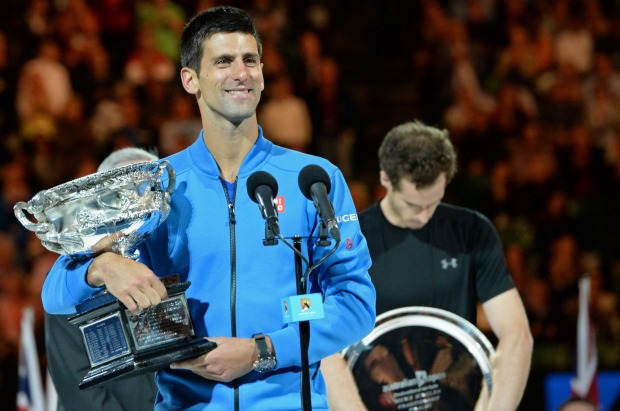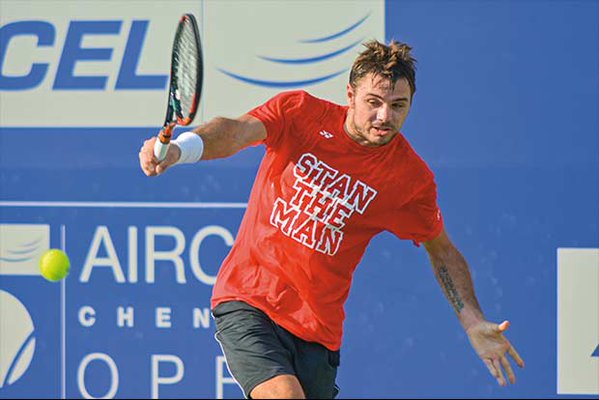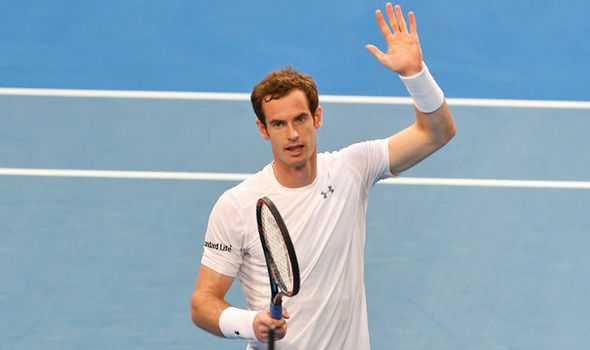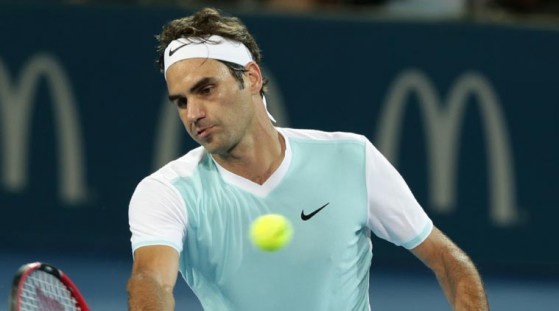The 2016 Australian Open is here, and while injury questions are enough to create some intrigue on the women’s side, the men’s tournament has one and only one clear favorite. Everyone else is playing for semifinal or runner-up rankings points… at least, it certainly feels that way.
That said, how many people expected Stan Wawrinka to win last year’s French Open? How many people thought, in September of 2011, that Novak Djokovic wouldn’t win a second U.S. Open title until 2015? Tennis can be unpredictable, even in this era of the Big Four (plus Wawrinka) and its sustained dominance from one tournament to the next.
Let’s preview the tennis men of Melbourne over the next two weeks. We start with a partial list of players who won’t compete in this tournament, encompassing both the men’s and women’s tournaments. You’ll see a few high-profile names:
Missing #ausopen2016 so far
Safarova
Gasquet
Kokkinakis
Del Potro
Dellacqua
Monaco
Robson
Tipsarevic
Haas— Christopher Clarey 🇺🇸 🇫🇷 🇪🇸 (@christophclarey) January 7, 2016
Now, to our five central questions for the fortnight Down Under:
5 – WILL ONE OF THE LOST BOYS FIND HIS WAY?
If you’re a casual fan of tennis, one of the best follows is Andrew Burton, who has coined the term (and hashtag) #ATPLostBoys. What does that term mean or refer to? Simple: Tennis players are supposed to peak in their mid-20s, and the current crop of players in that age range is not getting it done.
This is a young person’s game. What you’re seeing with Serena Williams — dominant in her mid-30s — or Roger Federer, still a top-three player at age 34, is not normal. You’re supposed to flourish as a young buck in tennis — not ordinarily at 20 or 21, but generally at 23 or 24. The legs are fresh. Older peers have a lot more tread on the tires. At 24 years of age, a tennis player hasn’t figured everything out, but s/he’s no longer a naive late-teenager or a 21-year-old who is still learning how to cope with life on the tour, in airports and hotels and press conferences and elsewhere.
The players on the ATP Tour in that 23-26 age range — players who should be making regular appearances in major-tournament semifinals and Masters 1000 finals — have very little to show for their careers thus far.
None of them have won a major title. Only Kei Nishikori — now 26 years old — made the 2014 U.S. Open final, but he lost to (now-) 27-year-old Marin Cilic. No other members of the “Lost Boys” have reached a major final.
No Lost Boy has played in more than one major semifinal. Neither has any Lost Boy won a title at the Masters 1000 level, and there are nine Masters tournaments each year. No member of the Lost Boys has played in more than two Masters finals (Raonic). It’s not just that the trophy case is bare; it’s that these players, in their mid-20s, aren’t even parking themselves in the biggest matches on tour. They haven’t been good enough to lose in championship matches… because they don’t even get there.
Can the Lost Boys find themselves, at this tournament or at some point in 2016? It might seem like a relatively unimportant question in the larger scheme of things, but we’ll have more to say on this a little later.
4 – CAN STAN SUSTAIN?
Stan Wawrinka is that rare breed of player who can be inconsistent for much of a season but flip the switch when the lights are bright. Wawrinka epitomized this tendency in 2015 when he bombed out of the Geneva Open (a 250-point event, the lowest on the regular tour) and then headed to Paris for the French Open… which he won by beating (and beating up) Novak Djokovic in the final.
The shirt says Stan The Man, but the tennis name for the Swiss should really be Big Moment Stan. He lives for the stage and the showdowns. Yet, as impressive as Wawrinka has been at the majors the past two years (winning one title in both 2014 and 2015), a milestone he has not yet reached is this: He has not made two major finals in the same calendar year. He has enough quality tennis to max out at one major per annum, but he blows a little too hot and cold to replicate a full-distance run within the same year.
Making the final of the Australian Open would certainly put Wawrinka in position to reach that two-final-in-a-year landmark. He’s always been historically weak at Wimbledon, so notching a final in Melbourne would relieve pressure heading to the French. If he fell short there, he could always rebound at the U.S. Open, and increase his standing in the world of men’s tennis — both historically and in the present tense.
The draw is not easy for Wawrinka in the second week. Rafael Nadal waits in the quarterfinals, and Andy Murray would loom in the semifinals. Big Moment Stan is more than capable of blasting through both men. The challenge will be to sustain quality.
Last year in Melbourne, Wawrinka was untouchable — close to perfect — in a dazzling quarterfinal detonation of Kei Nishikori. In the semis against Djokovic, Wawrinka sprayed balls all over the place. If he gets by Rafa in the quarters, he’ll need to be just as sharp to beat Murray a few days later.
Would Stan love to win a third major and surpass Murray? That’s a rhetorical question. Let’s establish this right now: If Stan makes the final — even if he loses to Djokovic 6-2, 6-1, 6-1 in 105 minutes — he’ll have reason to call this a great fortnight Down Under.
3 – IS RAFA READY TO RETURN TO FORM?
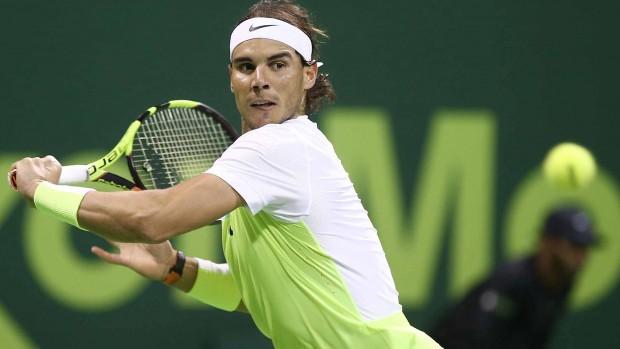
It isn’t the most fascinating question of the 2016 Australian Open, but it IS the most fascinating question of the 2016 ATP season as a whole: Can Rafael Nadal Parera, this great champion, find renewal as he gets older?
Nadal will turn 30 in June. He’s only 11 months older than both Djokovic and Murray, but since he won so much at a younger age — he obliterated Federer, Djokovic and Murray in terms of career performance and results before age 23 — he has logged a lot more miles. His playing style has — to this point — depended on hitting one more shot, retrieving one more ball, working harder than everyone else.
Nadal has said that his confidence betrayed him more than anything else in a miserable 2015 (no Masters titles, no major semifinals or finals), and he’s not wrong. However, Nadal just as clearly has to be willing to make adjustments to his game if he wants to prolong his career at the top tier of the sport. Maybe 2016 is the final year in which Rafa can play the way he always wants to play, but the odds suggest that Rafa has to win quicker points with flatter and more piercing groundstrokes if he’s going to hang with the other members of the top five.
The possible showdown with Wawrinka in the quarterfinals could be the match of the tournament, as could a potential semifinal between Federer and Djokovic in the other half of the draw. If Rafa gets by Big Moment Stan, he’d likely play Andy Murray in the semis.
It’s probably too much to expect Nadal to put all the pieces together right away. As usual, the French Open is the centerpiece of his season and the major in which he has the best chance of winning. The main thing for Nadal to get from this trip to Australia is a clear sense that his game has been rebuilt and will be whole by the time May arrives.
2 – CAN ANDY HANDLE THE HEAT?
Everyone knows that Novak Djokovic is playing for history at the highest level this season, but if one man in the top five faces more pressure than any other in 2016, it’s clearly Andy Murray.
Roger Federer has nothing left to prove.
Nadal would love to prove his critics wrong and thumb his nose at the premature obiturary writers who wished Federer would have retired after his brutal 2013 season. Yet, if this is the end of the line for Nadal, he’s left absolutely nothing on the table in his career.
Djokovic has already transformed his career, full stop.
Wawrinka, by winning a second major in 2015, has eternally buried the idea that he’s a one-hit wonder (the way Marin Cilic will be in the absence of a second major for the Croatian).
Murray, then, is the top-five resident with a lot to win — and lose — this year. If Wawrinka wins a third major before Murray does, the debate about which man has the better career will intensify. Murray has steadily remained at the top of the sport, just not at the very summit. He’s the mountain climber who has maintained an encampment 500 feet from the peak of Mount Everest, but only the Big Three have been able to scale 100 percent of the rock.
Murray enjoyed a very strong 2015 season, winning two Masters titles and making the final in Melbourne. He will almost certainly have to go through Wawrinka or Nadal in the semis before a likely final against Djokovic. Winning the whole thing, with Djokovic in peak form, is a big ask. However, Murray has a very cushy draw in the first five rounds. The semifinals represent a hugely important match for his season. If he can’t at least win that contest, Murray will be hounded by still more questions about his almost-but-not-quite track record in the Big Four era.
1 – WILL ANYONE STOP NOVAK DJOKOVIC?
This guy did so three times last year, more than anyone else on tour, but he never did solve the world No. 1 in a best-of-five-set match:
Federer has only himself to blame for the fact that he will face Djokovic in the semifinals, should he get that far. Federer’s losses early in the Shanghai and Paris (Bercy) Masters tournaments last fall caused him to shed enough rankings points that Andy Murray was able to pass him for No. 2. That second seed in Australia put Murray safely in the opposite half of the draw. He doesn’t have to worry about Djokovic until the final. Federer has played Djokovic in multiple Australian Open semifinals before, but never in a final. It would have been the ultimate showcase, but the draw on Friday slotted Federer (No. 3) into Djokovic’s half, and No. 4 Stan Wawrinka into Murray’s half.
Djokovic and Federer met in the finals of the last two majors. Djokovic has faced a Swiss player in each of the last three major finals. Most experts would tell you that Wawrinka is the tougher matchup for Djokovic, but that Federer — if only because of the draw — is more likely to get a chance to play Djokovic. Murray and Nadal could play an epic semifinal of their own, but if that scenario comes to pass, would the winner have enough in the tank to beat Djokovic in the final?
No.
It’s Novak Djokovic’s world as the Australian Open begins. If one opponent is able to turn that world upside-down, it will rate as a supremely impressive feat.

